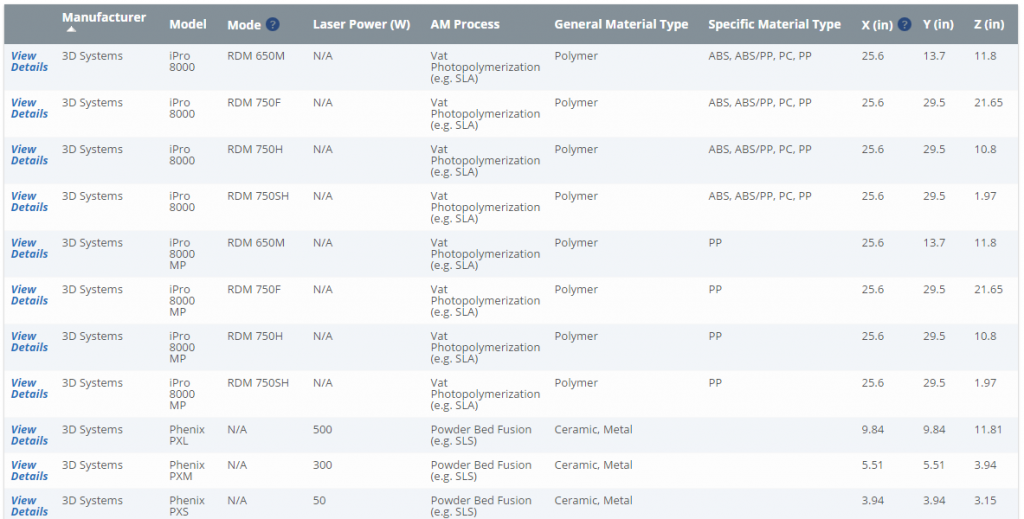When Senvol first emerged, the company concentrated on the meticulous task of establishing materials databases. Subsequently, the firm offered API access to its data. The US Army enlisted Senvol to investigate metal 3D printing repeatability, and following this, the company launched machine learning software. Since these developments, Senvol has successfully integrated itself into numerous large-scale supply chains. Now, the company has secured a contract from America Makes and the U.S. Air Force to employ machine learning for powder bed fusion qualification for Ti-6Al-4V grade 5.
Qualification is a laborious and time-intensive task. If the 3D printing industry could cost-effectively and accurately 3D print a million parts today, the challenge would lie in qualifying those parts. How many people would be required to inspect them, ensuring that they are printed correctly and would perform as intended? Furthermore, the introduction of a new 3D printer to the market could necessitate repeating this arduous process. Additionally, new materials and software updates could alter the characteristics of parts. Therefore, any solution that could simplify the part qualification process or aid in the discovery of ideal printing parameters would represent a significant saving in time, money, and effort for many people.
Senvol won’t be undertaking the project alone, but will be aided by Boeing, Battelle, the National Institute for Aviation Research at Wichita State University, ATI Inc., testing and inspection firm Element Materials Technology, materials consulting company 3Degrees, technical and process qualification consultancy Pilgrim Consulting, and AoZora Additive.
“The primary objective of this program is to demonstrate a novel approach, using machine learning, to rapidly and affordably update and/or establish a qualified AM process which can allow for changes in key AM process variables – namely, the use of a new AM machine of a different make or model. By demonstrating a novel approach, we hope to accelerate and reduce the cost of establishing equivalence to the baseline material,” said America Makes Technology Director Brandon Ribic.
“Senvol will implement data-driven machine learning technology that has the potential to substantially reduce the cost of process qualification and re-qualification. By demonstrating a novel approach, Senvol aims to drive tremendous value for the U.S. Air Force, the America Makes membership, and the additive manufacturing industry at large. This program will build on the success of several prior programs that we have led in this area. We are pleased to continue to utilize our machine learning capabilities to address this critical need for the industry and are thrilled to work with such an accomplished team on this program,” stated Senvol Co-CEO Zach Simkin.
If this team can demonstrate that parts manufactured with new machines or under new settings consistently meet quality standards, it will be a major achievement. Part qualification is a major hurdle, particularly due to the scarcity of well-trained professionals in this field. Moreover, even with available expertise, the process tends to be time-consuming.
Currently, if a new 3D printer enters the market offering the same quality but at four times the throughput, many are hesitant to adopt it immediately. They often prefer to plod along with their existing, familiar machines. However, if a machine learning tool could effortlessly adapt older parts to new machines, ensuring quick and reliable results, the market would likely embrace it.
Such advancements would benefit not just US manufacturing and defense manufacturing, but also accelerate the development of new 3D printed parts, making them cheaper and faster to produce. And this is something that we can all get behind!
Subscribe to Our Email Newsletter
Stay up-to-date on all the latest news from the 3D printing industry and receive information and offers from third party vendors.
You May Also Like
Further Understanding of 3D Printing Design at ADDITIV Design World
ADDITIV is back once again! This time, the virtual platform for additive manufacturing will be holding the first-ever edition of ADDITIV Design World on May 23rd from 9:00 AM –...
3D Printer Maker EVO-tech Reborn as NEVO3D — Once More With Feeling
EVO-tech was a 3D printing service and original equipment manufacturer established in 2013 and based in Schörfling am Attersee, Austria. The company produced high-quality material extrusion systems featuring linear bearings,...
3D Systems Brings 3D Printed PEEK Cranial Implant to the U.S. with FDA Clearance
For more than 10 years, 3D Systems (NYSE:DDD) has worked hand-in-hand with surgeons to plan over 150,000 patient-specific cases, and develop more than two million instruments and implants from its...
CDFAM Returns to Berlin for Second Annual Symposium
The second CDFAM Computational Design Symposium is scheduled for May 7-8, 2024, in Berlin, and will convene leading experts in computational design across all scales. Building upon the first event...
































